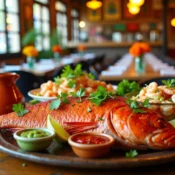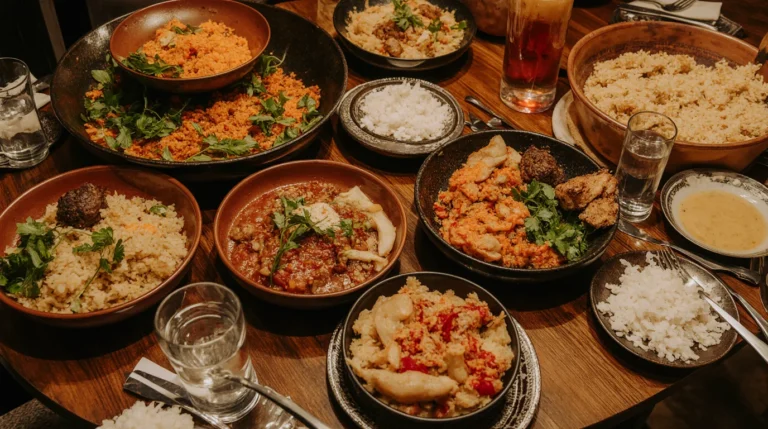
Filipino Restaurant – Authentic Filipino Cuisine Near You 2025
Filipino restaurants offer a delicious gateway into one of America’s most significant yet underappreciated culinary traditions. Did you know that approximately 4 million Filipinos have built communities across the United States, coming together over food and drink? In fact, Filipinos were the first Asian settlers in America, arriving as early as the 1500s.
When we explore filipino food restaurants, we’re actually experiencing centuries of rich cultural heritage. California specifically stands as the Filipino capital of the United States, home to 1.6 million Filipinos – the largest concentration outside the Philippines itself. Whether you’re searching for a filipino restaurant near me or the best filipino restaurant near me, you’ll discover dishes where rice symbolizes prosperity, adobo reigns as the national dish, and pancit represents long life and good luck. Furthermore, cities like Los Angeles feature vibrant filipino cuisine restaurants with numerous establishments offering authentic filipino foods that connect us to this thriving community. In this guide, we’ll help you discover what makes these culinary treasures so special and where to find them in 2025.
Table of Contents
What Makes a Filipino Restaurant Truly Authentic
Authenticity remains the cornerstone of every reputable filipino restaurant. The moment you step through the doors, your senses should be immersed in an experience that transcends mere dining. Authentic filipino restaurants connect diners to centuries-old traditions through meticulously prepared dishes, communal dining practices, and an atmosphere that embodies Filipino warmth and hospitality.
Traditional cooking methods and ingredients
The heart of any authentic filipino restaurant lies in its commitment to traditional cooking techniques. Beyond the popular adobo method (marinating meat in vinegar, soy sauce, and spices), true filipino cuisine restaurants embrace diverse methods like kinilaw (cooking seafood in acid without heat), ginataan (simmering in coconut milk), and lechon (roasting whole pig over an open flame). These techniques haven’t changed for generations, preserving flavors that tell stories of Filipino heritage.
Moreover, a genuine filipino food restaurant carefully selects ingredients that define the cuisine’s unique profile. The distinctive sourness from kalamansi (a citrus hybrid combining lemon, lime, and mandarin flavors), the tang of coconut vinegar, and the aromatic influence of banana leaves all contribute to dishes that transport diners to the Philippines itself. Additionally, authentic filipino restaurants recognize that these ingredients aren’t merely flavor components – they represent the archipelago’s biodiversity and the resourcefulness of its people.
The marriage of these traditional methods and ingredients creates what many chefs describe as the original fusion cuisine, characterized by the perfect balance of sweet (tamis), sour (asim), and salty (alat) flavors. Consequently, when searching for the best filipino restaurant near me, look for menus highlighting these traditional techniques rather than westernized adaptations.
Importance of family-style dining
Family stands at the core of Filipino culture, nowhere more evident than in dining traditions. Authentic filipino restaurants honor this through kamayan feasts – communal meals served on banana leaves where diners eat with their hands. This centuries-old practice isn’t merely about food consumption; it represents equality, camaraderie, and the breaking down of barriers between diners.
A genuinely authentic filipino restaurant will offer dishes served family-style rather than individual portions. The ritual of sharing food from communal plates reinforces connections between diners while echoing the Filipino value of bayanihan (community spirit). During these shared meals, stories flow freely alongside the food, creating memories that extend beyond the dining experience.
Meals at a filipino cuisine restaurant traditionally unfold without courses – everything appears at once, allowing diners to create their perfect bites and combinations. This approach stands in contrast to Western dining conventions but perfectly encapsulates the Filipino preference for communal, informal eating experiences centered around the family kitchen.
Cultural values reflected in food
The soul of every authentic filipino restaurant lies in how it embodies Filipino cultural values through its food and atmosphere. Filipino hospitality (pagmamano) – the reverence shown to elders and gratitude for blessings received – should permeate the dining experience. Meanwhile, the atmosphere should evoke feelings of warmth and welcome characteristic of Philippine hospitality.
Filipino food culture treats cooking as a love language that invokes powerful memories. When evaluating filipino foods at restaurants, consider whether they transport you emotionally as well as culinarily. As one Filipino diner noted, “The simple waft of sinigang can feel like a warm embrace”. This emotional connection to food represents the intangible element separating truly authentic establishments from those merely serving Filipino-inspired dishes.
For many Filipino-Americans, these restaurants serve as cultural touchstones – places where traditions are preserved and passed to new generations. The best filipino restaurant near me might not be the most expensive or elaborate, but rather the one that most faithfully preserves these cultural connections through food prepared with malasakit (compassionate care).
Visit Epicurean Stay to discover authentic cultural dining experiences during your travels.
Popular Filipino Dishes You’ll Find at a Filipino Restaurant
Stepping into a filipino restaurant reveals a vibrant tapestry of flavors that tell stories of the islands’ complex history. Each dish represents centuries of cultural exchange, family traditions, and regional specialties that have evolved into what we now recognize as filipino cuisine. Let me introduce you to the signature dishes you’ll encounter at any authentic filipino restaurant.
Adobo: The national dish
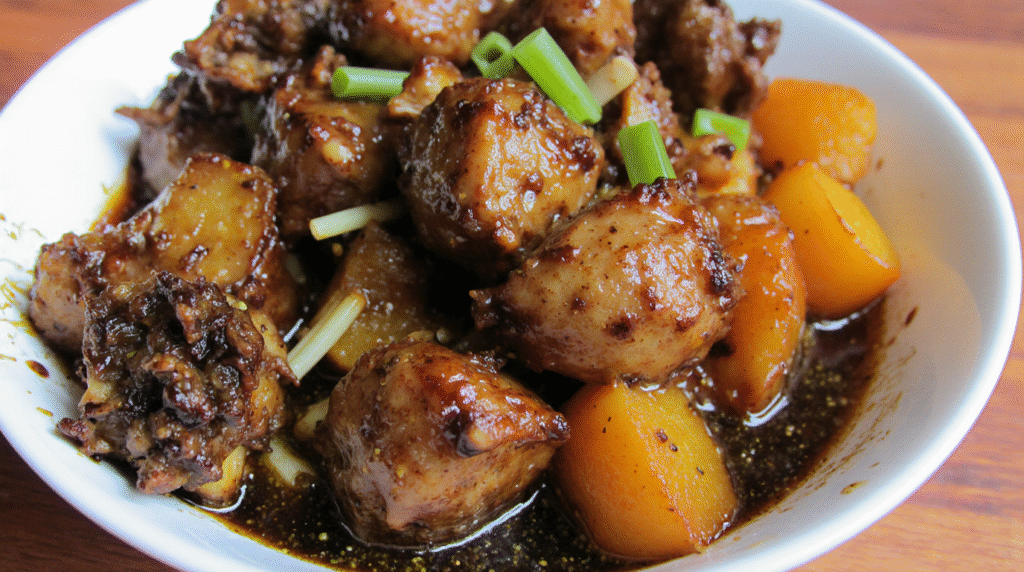
Adobo stands as the undisputed ambassador of filipino cuisine, found on virtually every filipino restaurant menu nationwide. This savory dish features meat (typically chicken or pork) marinated and simmered in a tangy mixture of vinegar, soy sauce, garlic, and black peppercorns. What makes adobo fascinating is that no two filipino food restaurants prepare it exactly alike—family recipes vary in proportions, additional spices, and cooking techniques. Nevertheless, the distinctive tangy-savory profile remains consistent, making it instantly recognizable to filipino food enthusiasts.
Sinigang: A sour tamarind soup
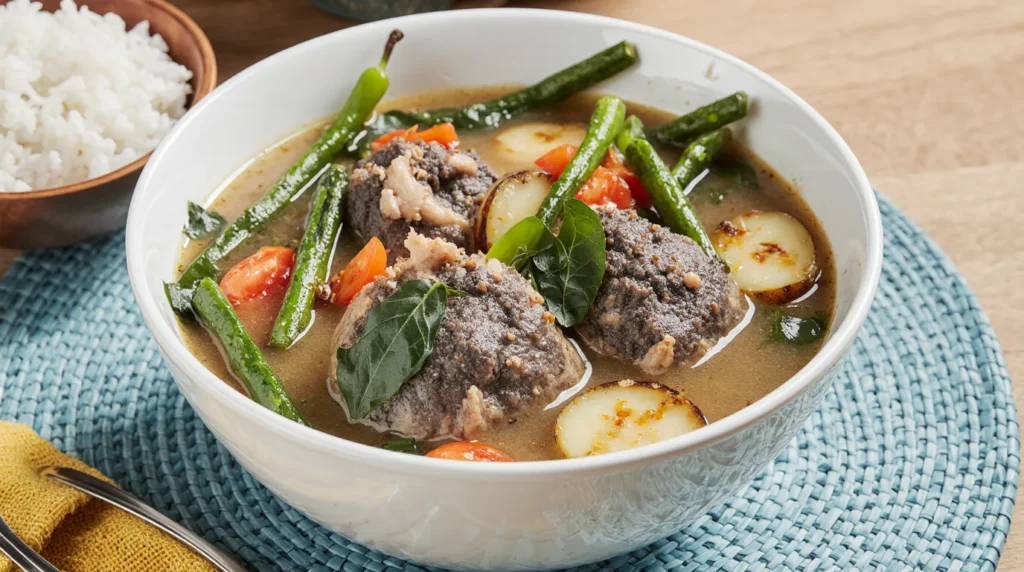
When visiting a filipino restaurant near me, I always look for sinigang—a sour soup that perfectly showcases the Filipino love for contrasting flavors. This comforting dish features meat or seafood in a broth soured primarily with tamarind, though some regional variations use other souring agents like guava or calamansi. The best filipino restaurant near me serves sinigang with a careful balance of sourness alongside vegetables like water spinach, radish, and eggplant. The resulting dish offers both comfort and complexity, especially welcome during cold weather.
Lechon: Crispy roasted pork
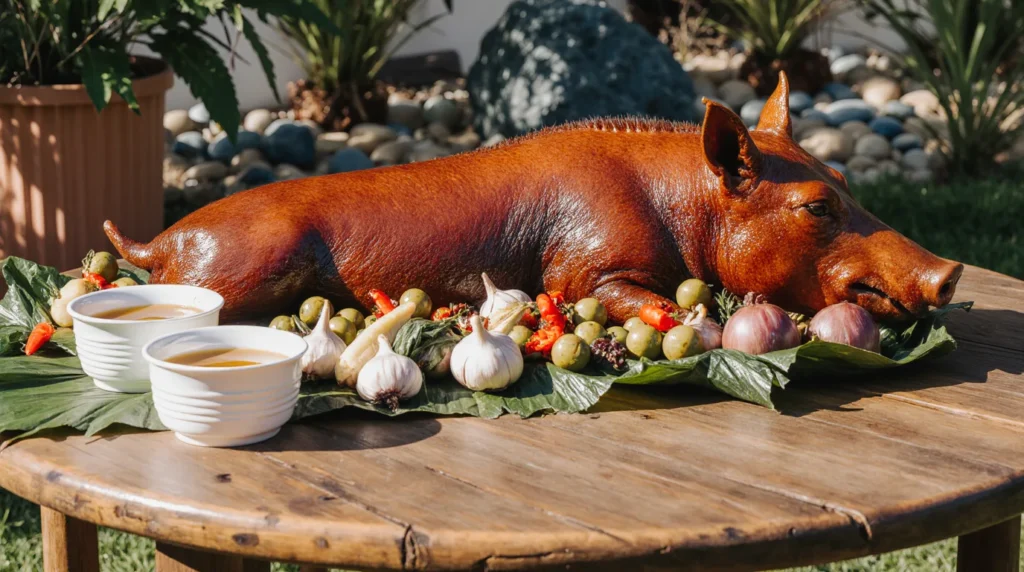
Lechon represents celebration in Filipino culture, often taking center stage at special occasions. At upscale filipino cuisine restaurants, you’ll find this whole roasted pig with crackling crisp skin and tender, flavorful meat. The preparation involves meticulous seasoning of the cavity with lemongrass, garlic, and other aromatics before slow-roasting over coals. Many filipino restaurants offer smaller portions rather than whole pigs, usually served with liver sauce or vinegar dipping sauce to cut through the richness.
Pancit: Noodles for every occasion
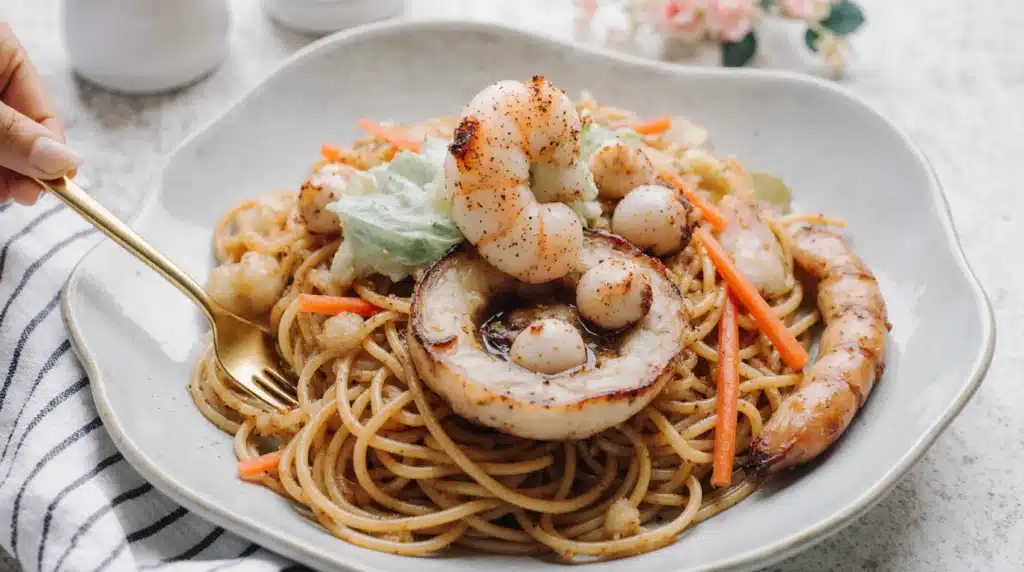
Noodle dishes called pancit appear on every filipino restaurant menu, symbolizing long life in Filipino culture. These chinese-influenced dishes vary widely—pancit canton features egg noodles stir-fried with vegetables and meat, while pancit bihon uses rice noodles for a lighter texture. Other varieties include the thicker pancit palabok topped with shrimp sauce and garnishes. Certainly, no celebration at a filipino food restaurant would be complete without at least one pancit variation.
Lumpia: Filipino spring rolls
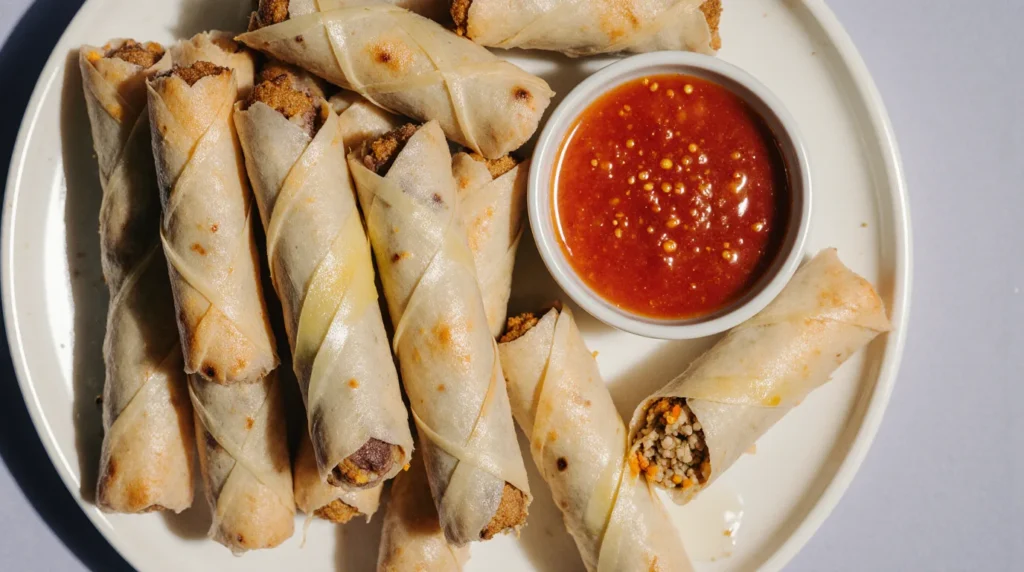
Lumpia holds a special place among filipino foods as the perfect appetizer or party snack. These crispy spring rolls contain a savory filling of ground meat, vegetables, and seasonings wrapped in thin crepe-like wrappers before deep-frying. Filipino restaurants typically offer both shanghai (meat-filled, cigar-sized) and fresh lumpia (larger, sometimes unfried with vegetable filling). The best filipino restaurant near me serves these golden-brown delights with sweet chili dipping sauce for a perfect balance of flavors.
Halo-Halo: A colorful dessert

Ending your meal at a filipino restaurant without trying halo-halo would be a missed opportunity. This iconic dessert—whose name literally means “mix-mix”—combines shaved ice, evaporated milk, and a colorful array of ingredients including sweet beans, jellies, fruits, purple yam jam, and flan. Topped with a scoop of ube (purple yam) ice cream, this refreshing treat exemplifies Filipino creativity and love for contrasting textures and flavors.
Discover more about authentic cultural dining experiences during your travels by visiting Epicurean Stay, your guide to culinary adventures worldwide.
How to Find the Best Filipino Restaurant Near You
Discovering a fantastic filipino restaurant requires some detective work beyond simple online searches. Finding places that truly capture the essence of Filipino cuisine means knowing where to look and what to look for. Let me guide you through several proven strategies to locate authentic filipino food restaurants that will satisfy your cravings.
Use local directories and review platforms
Online platforms have become invaluable resources for locating quality filipino restaurants. Google Reviews provides comprehensive listings with helpful star ratings, while Yelp offers detailed user experiences and photos of dishes. OpenTable not only shows available filipino cuisine restaurants but often includes menu highlights and specialties. Fortunately, many review sites allow filtering by neighborhood, price range, and specific dishes – making it easier to find that perfect filipino restaurant near me.
Look for community recommendations
The most reliable path to authentic filipino food comes through community connections. Cities with significant Filipino populations often harbor hidden culinary gems. Jersey City hosts the largest Filipino community among northeastern U.S. cities, with Filipino immigrants establishing businesses there since the 1960s. Similarly, Bergenfield in New Jersey ranks among the most Filipino-populated towns nationwide. When visiting these areas, asking locals about their favorite filipino restaurant provides insights no online review can match.
Check for authentic menu offerings
When evaluating a filipino restaurant’s authenticity, the menu tells the story. Look for these indicators of genuine filipino foods:
- Traditional dishes beyond just adobo (sinigang, kare-kare, sisig)
- Regional specialties like Cebuano-style lechon
- Proper Filipino naming conventions rather than westernized descriptions
- Availability of kamayan-style dining options
Essentially, restaurants proudly displaying their cultural heritage rather than diluting traditions typically deliver more authentic experiences.
Visit during Filipino festivals or events
Filipino food festivals present perfect opportunities to sample various filipino cuisine offerings simultaneously. Events like the Filipino Island Fest feature “handpicked Bay Area’s favorite food trucks, vendors, and restaurants”. These gatherings celebrate bayanihan (community spirit) while introducing visitors to diverse filipino restaurant options. Moreover, attending these cultural celebrations often connects you with locals who can recommend their favorite spots.
For travelers seeking authentic dining experiences across various cultures, Epicurean Stay offers curated guides to help you discover genuine culinary treasures during your journeys, including remarkable filipino food restaurants that might otherwise remain undiscovered.
Top Filipino Cuisine Restaurants to Try in 2025
For 2025, these standout filipino restaurants across America offer extraordinary culinary experiences that showcase the depth and diversity of Filipino cuisine. From family-style barbecue to Michelin-starred tasting menus, these establishments exemplify the evolution of filipino food in the American culinary landscape.
1. The Park’s Finest – Los Angeles, CA
The Park’s Finest represents a perfect fusion of Filipino flavors and American barbecue techniques. Located in Echo Park, this filipino restaurant began as a catering company in 2009 before opening its brick-and-mortar location in 2012. Their signature dishes include Mama Leah’s Coconut Beef, featuring beef simmered in coconut cream, and Ann’s Cornbread Bibingka, a Filipino-inspired cornbread baked on banana leaves. The restaurant gained national recognition after being featured on Food Network’s Diners, Drive-Ins and Dives. What sets this filipino cuisine restaurant apart is its unique “backyard boogie” approach—50% Mom, 50% Pop, 100% LA.
2. Kasama – Chicago, IL
Kasama made history as the world’s first filipino restaurant to earn a Michelin star. This Ukrainian Village establishment, run by husband-and-wife team Tim Flores and Genie Kwon, offers both daytime café service and an evening tasting menu. Their 13-course dinner experience costs $285 per person, featuring elevated interpretations of classic filipino foods. The restaurant’s name—meaning “together” in Tagalog—perfectly captures their philosophy of making Filipino cuisine accessible to new audiences while maintaining authenticity.
3. Jeepney – New York, NY
Founded by Nicole Ponseca in 1998, Jeepney established itself as a trailblazing filipino food restaurant in New York’s competitive culinary scene. Though its East Village location closed in 2021, Jeepney continues to thrive with its Miami location. The restaurant became famous for its kamayan-style dining—meals served on banana leaves without plates or utensils—and creative dishes like the award-winning Chori Burger featuring longanisa and beef patty.
4. Bad Saint – Washington, D.C.
Though Bad Saint closed in 2022, its legacy as a pioneering filipino restaurant remains significant. This tiny 24-seat restaurant earned the #2 spot on Bon Appetit’s best new restaurants in America list in 2016. James Beard award-winning chef Tom Cunanan created dishes that helped popularize Filipino cuisine across America. The restaurant’s intimate setting fostered connections between diners, creating a unique community experience that many still remember fondly.
5. Max’s Restaurant – Multiple Locations
For those seeking a filipino restaurant near me, Max’s Restaurant offers authentic Filipino cuisine across multiple North American locations. From Jersey City to Houston, Vancouver to Las Vegas, Max’s brings consistent quality to Filipino communities nationwide. In 2025, Max’s continues partnering with charitable organizations like the Yellow Boat of Hope Foundation, combining culinary excellence with community service.
For travelers seeking authentic cultural dining experiences beyond filipino restaurants, Epicurean Stay offers curated recommendations for culinary adventures worldwide.
What to Expect When Dining at a Filipino Food Restaurant
Beyond exotic flavors and colorful presentations, dining at a filipino restaurant offers an immersive cultural experience that engages all your senses. Walking into an authentic filipino food restaurant means embracing traditions that span generations and reflect the archipelago’s rich heritage.
Kamayan-style dining experience
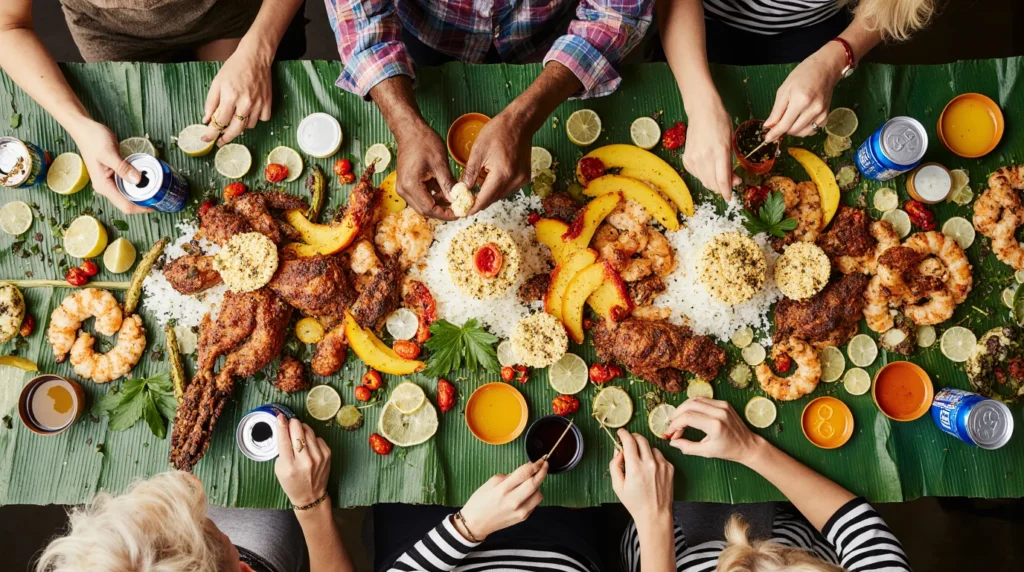
The most distinctive tradition you’ll encounter at a filipino restaurant is kamayan—a communal feast where food is laid out on banana leaves and eaten entirely with your hands. The word “kamayan” literally means “hands” in Tagalog, one of the Philippines’ major dialects. This centuries-old practice harkens back to the country’s Indigenous roots before Spanish colonization. At upscale filipino cuisine restaurants, chefs often char the banana leaves with blowtorches before arranging steamed rice, grilled meats, seafood, and vegetables in an artistic display. Learning the proper technique involves pressing meats into rice, forming a pouch with your fingertips, then using your thumb to deliver food to your mouth—a skill requiring practice yet surprisingly intuitive.
Warm hospitality and shared meals

Filipino hospitality transforms every meal into a celebration. Inside a filipino restaurant, food is invariably served family-style in large bowls or platters where everyone helps themselves. Rice forms the foundation of every meal, accompanied by small bowls of vinegar, fish sauce, and calamansi for personalizing flavors. The Filipino saying “the family that eats together, stays intact forever” reflects how deeply meals connect to family values. This generosity extends to guests, who often receive “pabaon”—wrapped food packages to take home—ensuring no one leaves empty-handed.
Fusion of Spanish, Chinese, and native flavors

Every filipino food restaurant showcases the cuisine’s unique position as perhaps the original fusion food. The balance of sweet (tamis), sour (asim), and salty (alat) flavors creates distinctive profiles unlike any other Asian cuisine. Chinese traders introduced noodles (pancit), now symbolizing prosperity and long life at celebrations. With 7,100+ islands comprising the Philippines, even the best filipino restaurant near me represents just one region’s interpretation of these diverse culinary traditions.
Visit Epicurean Stay to discover more authentic cultural dining experiences during your travels.
Conclusion
Filipino restaurants offer us far more than just delicious meals — they provide gateways to centuries of rich cultural heritage. Throughout this exploration, we’ve discovered what truly makes a filipino restaurant authentic, from traditional cooking methods to family-style dining practices that reflect deep cultural values. Additionally, we’ve journeyed through iconic dishes like adobo, sinigang, lechon, and the colorful halo-halo that define filipino cuisine.
Finding the best filipino restaurant near you requires looking beyond simple online searches. Community recommendations, authentic menu offerings, and cultural events can lead you to hidden gems where tradition meets culinary excellence. After all, these establishments serve as vital cultural touchstones for the 4 million Filipinos who have built communities across America.
The standout filipino restaurants we highlighted for 2025 demonstrate how this cuisine continues to evolve while honoring its roots. From family-style barbecue joints to Michelin-starred establishments, these filipino food restaurants showcase the remarkable diversity within this culinary tradition.
Your experience at a filipino restaurant will likely differ from other dining experiences. The warm hospitality, kamayan-style eating with your hands, and the fusion of flavors create memorable moments that connect you to Filipino culture. Though relatively underappreciated compared to other Asian cuisines, Filipino food tells stories of resilience, adaptability, and community through every bite.
Whether you’re a curious food enthusiast or someone seeking a taste of home, filipino restaurants deserve a place in your culinary adventures. You can discover more authentic cultural dining experiences during your travels by visiting Epicurean Stay, which helps connect travelers with genuine gastronomic treasures worldwide.
Filipino cuisine undoubtedly stands as one of America’s most significant yet underappreciated culinary traditions. The next time you search for “filipino restaurant near me,” remember you’re not just looking for a meal — you’re seeking an experience that bridges cultures, honors traditions, and celebrates the vibrant Filipino community that has enriched America’s cultural tapestry for centuries.
FAQs
Q1. What are some must-try dishes at a Filipino restaurant? Some essential dishes to try include adobo (the national dish), sinigang (a sour tamarind soup), lechon (crispy roasted pork), pancit (noodles for special occasions), lumpia (Filipino spring rolls), and halo-halo (a colorful dessert).
Q2. How can I find an authentic Filipino restaurant near me? To find an authentic Filipino restaurant, use local directories and review platforms, seek community recommendations, check for traditional menu offerings, and consider visiting during Filipino festivals or events in your area.
Q3. What is kamayan-style dining? Kamayan is a traditional Filipino dining style where food is served on banana leaves and eaten with hands. It’s a communal feast that encourages sharing and connection among diners, reflecting Filipino cultural values.
Q4. Are Filipino restaurants suitable for vegetarians? While Filipino cuisine is traditionally meat-heavy, many restaurants now offer vegetarian options. Look for dishes like pinakbet (vegetable stew), laing (taro leaves in coconut milk), and vegetable lumpia. It’s best to check with the specific restaurant for their vegetarian offerings.
Q5. What makes Filipino cuisine unique compared to other Asian cuisines? Filipino cuisine is unique due to its fusion of flavors from Spanish, Chinese, and native influences. It’s characterized by a balance of sweet, sour, and salty tastes, and often incorporates ingredients like vinegar, soy sauce, and tropical fruits. The emphasis on family-style dining and use of hands in eating also sets it apart.

